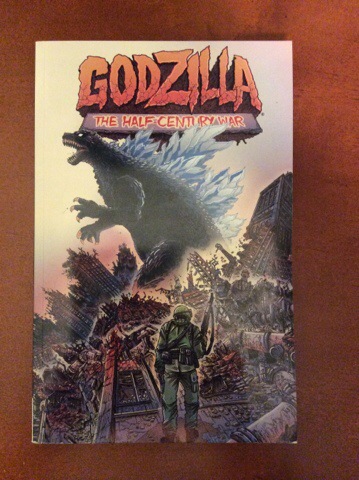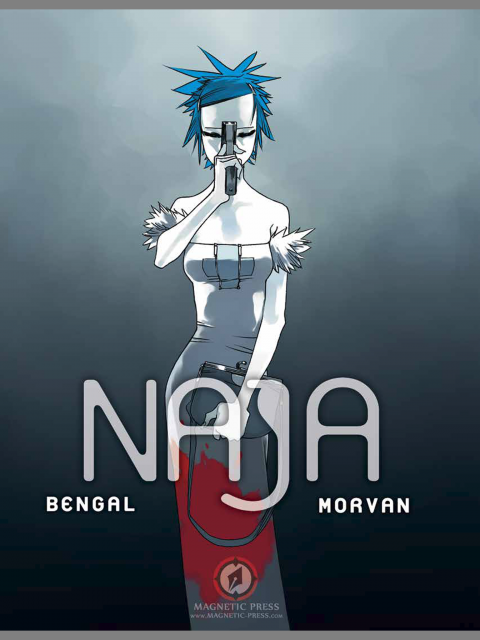Why does every “great book” have to always be about criminals or perverts? Can’t I just find one that’s about regular people living everyday life?
—Building Stories, final page (at least how I read it)
In today’s column, I’m going to try to convince you to invest in BUILDING STORIES, Chris Ware’s sprawling epic about loneliness, depression and learning to take happiness when you can get it.
There are a number of reasons why you may never read this book. One is the cost. It’s $50 at most shops, a little under $40 at Amazon. Ask for it for Christmas or your birthday. You’ll never forget who gave it to you.
Another reason it is intimidating is the format. It’s a shrink-wrapped, boardgame-sized box with mysterious, rattling contents. The exterior gives little indication as to the sprawling story contained within, written by a guy you probably haven’t read before. But fight past those intimidations, save your drive-thru coffee money for a couple of months and get this book as soon as you can.
BUILDING STORIES is a reminder that some comics are meant to be guzzled like cheap beer, and some are meant to be enjoyed and dissected like an interesting craft brew. I know that sounds all cliché and hipsterish but I mean it un-ironically. I love Wolverine and I love Pabst Blue Ribbon but I think we can all agree we consume those differently than LOVE AND ROCKETS and Black Butte Porter. Each aims to please in its own way.
BUILDING STORIES is largely a story about dread, sadness and anxiety, but in the end it’s more about how these emotions wax and wane throughout our lives, and how stupidly normal that is, even if it doesn’t seem like it at the time.
The book arrives in your lap in a boardgame-sized box containing 14 items of various sizes, from a Wall Street Journal-sized broadsheet to an oversized, cloth-bound volume to a fold-out, four-panel board.
It’s a singular object, and the experience of reading it can’t be reproduced in a simple omnibus volume or on a tablet screen. I soften a little more toward digital comics with each passing year and each new generation of devices seemingly designed just for reading comics. But when something like BUILDING STORIES comes along that simply couldn’t exist digitally, I can’t help but feel a renewed sense of awe for printed comics. That being said, STORIES can feel like a burdensome read at times, and you’ll pray that you never misplace any of the items, even if Ware’s clever back cover matter encourages you to do so.
The varied formats suggest things about the contents that you probably don’t even consider at first. One emulates a Little Golden Book and tells the story of 24 hours in the life of one character. Another is a large, newspaper-style broadsheet that requires some arm strength to hold up or table space to splay it out on. Another is a fold-out series of strips that ultimately form a loop. There is no beginning or end.
Because the contents are loose and the reading order is vaguely defined on the back of the box, the order in which you read STORIES will have an effect, I think, on its lasting impression. I chose an order that went from smallest piece in terms of vertical and horizontal dimensions to largest. This left three pieces at the end that were essentially equal in size, so I sort of randomly chose them. I don’t know that the piece I read last was intended to be read last, but it provided such a sense of wonder and closure that even if it was the first thing Ware wrote, I’m glad I saved it for the end. It worked perfectly for me.
My reading order:
[flickr video=72157633197854161]
(If you can’t see the slideshow, here’s a link to the slideshow on Flickr.)
Ware’s art style is that of simplified geometric shapes. Scenes are viewed either straight on or from an isometric view or, on occasion, from the top down. This serves the reader two ways.
The story is ostensibly about regular people doing regular things, and Ware’s straightforward style lends itself well to simply relating events. His infographics-like approach appeals to me especially as an infographics artist. Several times he assembles poster-sized narratives that tackle a single subject or several, all surrounding a single focal illustration.
The variety of formats are knitted together with Ware’s rigid artistic and panelling style, and his consistently rendered (and amazingly well proofread) lettering makes it feel as though you are continuing through the story without missing a beat, even when you’re going from a 3 1/2 x 7 inch folded strip to a 16 x 22 inch broadsheet.
One thing that constantly jumps out at me is when Ware draws close-ups of faces and we get full eyes, whites and all. Most faces in the book are adorned with simple dots or lines, so when you see fully rendered eyes, they peer into your soul and you almost have to look away, not wanting to make eye contact with this person you’ve been spying on for hundreds of pages.
One of the most enduring mysteries of the book is how our unnamed protagonist ended up having her leg amputated below the knee. Ware is purposefully coy about how it happened. In my reading order, the secret was revealed on the last few pages, and even then the memory is vague and shrugged off by the protagonist. It’s been a part of her existence since she was a young girl, and the day-to-day of being an amputee is as normal to her as having two legs is to you and I.
So why did Ware write a story about an amputee? If anything, BUILDING STORIES is about loss. Loss of friends and family, loss of happiness, loss of vitality. What demonstrates loss more than losing a part of our bodies?
While the bulk of the story is about the main unnamed protagonist, we get a glimpse into the lives of the other tenants of the building she lives in, and the life of the building itself, which in several passages narrates its own story in curly scripted lettering. We get a sense of a hundred years or more of the building’s history and occupants, and of the landlady whose life could have been very different had her circumstances not tied her to the building, and of the number of relationships and life events that have occurred under its roof.
I’ve read through BUILDING STORIES once, but I have no doubt I’ll read it again, and next time I’m going to change the order. I think this book will have lessons to teach me for years to come.



